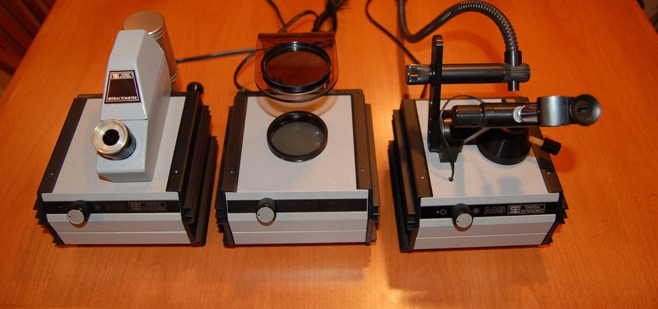System eickhorst

If construction quality & longevity matters to you, look no further than system eickhorst
Back in the late 70s when I entered the gem lab business there was a profusion of gem instrumentation offered. Indeed, there was a much wider variety of equipment back then than there is now.
The equipment manufacturer that has declined the most while still remaining in business is GIA’s Gem Instrument division. They are truly a shadow of their former selves offering perhaps 10% of the total number of pieces of equipment they produced in the early 80s.
Another trend, or course, is the outsourcing of manufacturing to China. While equipment from China is cost effective and in some cases represents good value, the old fashioned precision engineering from Europe and the U.S. is largely missing.
There are a couple of companies, however, that have been building quality gemological instruments for many years and have resisted the temptation to cheapen their offerings. Both Krüss and Eickhorst, two German companies based in Hamburg, fall into this category.
Last year I ordered two instruments from Eickhorst, their horizontal microscope base for immersion work and their M9 spectroscope base that I had fitted for a Zeiss spectroscope with wavelength scale. I was quite impressed by the quality of the construction and the well thought-out design inherent in both these units and so when I was in Tucson last week for the gem show I sought out Manfred Eickhorst so as to introduce myself and to learn more about this fascinating company. Manfred and his lovely wife answered all of my questions and were personable, knowledgable and generous with information. I also wanted a chance to look over the Eickhorst refractometer with the completely unique expanded scale, a significant improvement to refractometer design that allows easier interpolation to .001, especially at the upper end of the refractometer scale. I was so impressed by the heavy duty, all metal construction quality and excellence of design that I purchased a unit on the spot and took it home with me.
In evaluating various pieces of gem equipment for my book on gemological instrumentation I am purchasing many instruments so that I can use them in a working environment and make judgements based on actual hands-on experience. This separates my gem instrument book from others that have been written. While clearly it is not practical to purchase every piece of gemological equipment out there, an instrument will not go in the book until I have had an opportunity to work with it personally, either in my own lab, someone elses, or on the premises of the manufacturer.
I was sufficiently impressed with the quality and capability of the Eickhorst refractometer that I purchased both the refractometer light source module (M3) and the polariscope module (M4). After working with them a while it is clear that these are compact, stylish, matched components of extraordinary quality that will look great in a lab and that will last a discerning gemologist a life-time.
The M3 light source base is made to match the Eickhorst SR/XS refractometer which fits perfectly on the base and has two fittings to hold the refractometer tightly in position. However, you can also use another brand refractometer with no difficulty and the height of the lightsource is adjustable so you can fine tune its placement vis a vis the position of your refractometer’s light port.
In my lab I have been using the older Gem Instruments Utility Light but the monochromatic light port is a bit high for anything but GIA’s Duplex II refractometer. As a result I have a selection of wooden blocks that I use on my other refractometers to get the light output and input ports to match by elevating the refractometers. This is a minor inconvenience. However, I was pleasantly surprised to find that the Eickhorst (M3) light source and base height is situated to allow the use of my most frequently used refractometers without adjustment. These are the Rayner Dialdex, the two Gemology Pro units, and the Duplex II. Add the Eickhorst and there are five refractometers that can be used immediately with no height adjustment necessary.
The light is a bright, nearly monochromatic yellow on a rheostat so its intensity can be adjusted.
This Summer I will visit both Krüss and Eickhorst in Hamburg to evaluate their instrument offerings. In the meantime if you are a gemologist that appreciates high qualilty and great design and wants to buy quality equipment that will last, the Eickhorst equipment is competitively priced, high quality, compact and stylish and gets my highest recommendation.
– L. Bruce Jones, February 10, 2011

